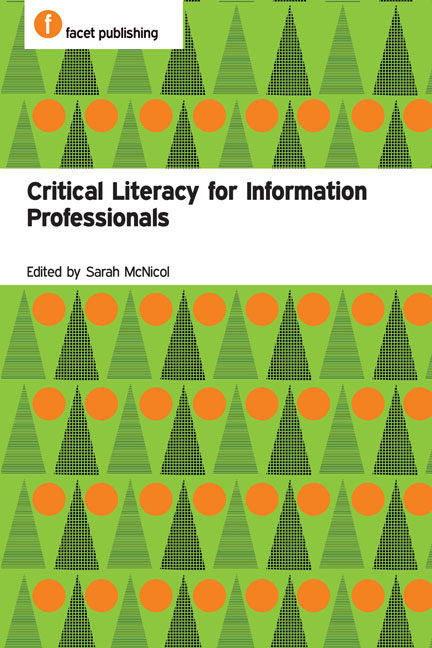Book contents
- Frontmatter
- Contents
- Contributors
- Introduction
- PART 1 THEORIES OF CRITICAL LITERACY
- PART 2 CRITICAL LITERACY IN PRACTICE
- 8 A picture is worth a thousand words: teaching media literacy
- 9 Curricular and extra-curricular opportunities to engage school students in critical literacy in England
- 10 New media and critical literacy in secondary schools
- 11 Critical literacy and academic honesty: a school librarian's role and contribution
- 12 Engaging undergraduate communications students in critical information literacy
- 13 Exploring pedagogical implications of students’ search mediation experiences through the lens of critical information literacy
- 14 Diffusing critical web literacy in a teacher-education setting: initial reflections and future planning
- Further information
- Index
10 - New media and critical literacy in secondary schools
from PART 2 - CRITICAL LITERACY IN PRACTICE
Published online by Cambridge University Press: 08 June 2018
- Frontmatter
- Contents
- Contributors
- Introduction
- PART 1 THEORIES OF CRITICAL LITERACY
- PART 2 CRITICAL LITERACY IN PRACTICE
- 8 A picture is worth a thousand words: teaching media literacy
- 9 Curricular and extra-curricular opportunities to engage school students in critical literacy in England
- 10 New media and critical literacy in secondary schools
- 11 Critical literacy and academic honesty: a school librarian's role and contribution
- 12 Engaging undergraduate communications students in critical information literacy
- 13 Exploring pedagogical implications of students’ search mediation experiences through the lens of critical information literacy
- 14 Diffusing critical web literacy in a teacher-education setting: initial reflections and future planning
- Further information
- Index
Summary
Introduction
New media, including Wikipedia and YouTube, has revolutionized how 11- to 18-year-old students research and learn. This chapter will examine the relationship between students and the information they find on these sites and look at how they use this information. It begins with an exploration of the features of new media and their use among secondary school students. It then looks at how the principles of critical literacy can help students to use these new media resources more effectively and highlights the role that school librarians can play in helping students to develop as critical users of new media.
New media
The term new media can be difficult to define. It is not sufficient to define it as media that has emerged more recently than other types. Such a focus would mean that what constitutes new media will continually change and that today's new media is just tomorrow's old media. Neither is it sufficient to focus on the form the information is in: whether it is text, video, sound or multimedia. One type is not defined as new media at the expense of another. Instead, it is necessary to look at how the information is created and what can happen to the information after creation. In this sense, old media is any medium, such as a book, journal article or static HTML web page, which has a private author(s). The information is created, published and then consumed. In comparison, new media has a different, and more dynamic, lifespan. A source can be created and published online by anyone and it can then be commented on, or edited, by any user in an open online community. In this way, the information can continue to evolve. This has been described as ‘the back and forth nature of online communities’ (Jackson and Wallin, 2009, 375) and it is this interactivity that can be seen as a provocative challenge to the academic essay and other old media. It is this feature that sets new media apart from the old.
- Type
- Chapter
- Information
- Critical Literacy for Information Professionals , pp. 115 - 122Publisher: FacetPrint publication year: 2016



